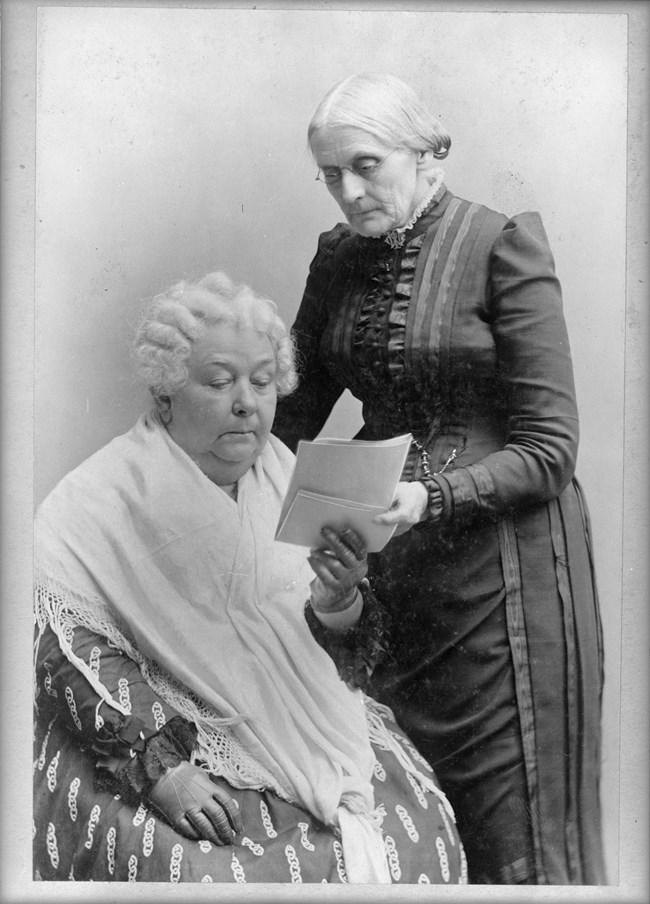Part of a series of articles titled Essays: Overview of Women's Suffrage .
Article
Introduction: Women's Suffrage

Courtesy of the Library of Congress, Prints and Photographs Division. Public domain.
In 1848 women and men met in Seneca Falls, New York to advance the cause for women’s rights. The convention, organized by Elizabeth Cady Stanton, Lucretia Mott, and others, marked a pivotal point in the women’s suffrage movement. These women made speeches and petitioned Congress, demanding greater rights for women. Stanton and Mott did not live to see nation-wide women's suffrage, but they paved the way for future suffragists like Alice Paul, Ida B. Wells, and Mabel Ping-Hua Lee.
But the women’s suffrage movement was not always unified. Some suffragists thought only white women should get the right to vote. Others like Charlotte Forten Grimke, Mary Ann Shadd Cary, and Mary Church Terrell recognized the importance of African American women's votes.
In 1920, Congress and the states ratified the 19th Amendment recognizing women's voting rights. While many women headed to the polls, the amendment did not recognize the voting rights of all women. Native American women, for example, were not considered US citizens until 1924 and could not vote.
Last updated: August 15, 2019
